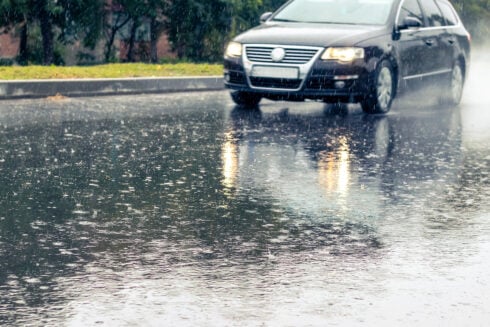If you use LPG, you may have dealt with vaporizers. This particular type of appliance converts liquid LPG into gas, which then becomes usable for heating.
Understanding the type of LPG gas vaporizer can help you in selecting the most suitable option for your needs while keeping in mind effectiveness and safety.
In this article, we will take you through different kinds of LPG gas vaporizers and how to choose the best for your specific situation.
What is an LPG Gas Vaporizer?
An LPG gas vaporizer is essentially a device that converts liquid LPG into its gaseous form. LPG is stored as a liquid under pressure, but for most applications, it has to be changed into its gaseous state. The vaporizer provided by companies like I-Maximum converts the liquid into gas. It does so by raising the temperature of the liquid to a point where it evaporates and passes through pipes to the appliance that will burn the gas.
While the concept sounds rather uncomplicated, the process does indeed vary regarding vaporizer type. Your options depend on the volume of LPG required, what type of energy is readily available, and the exact surroundings.
In any type of appliance, the rate of vaporization is a very important factor to consider for the gas supply to be reliable and consistent. Different types of vaporizers are designed to handle different demands, from residential to industrial applications. Some are more suitable for cold weather than others. Proper selection of a vaporizer optimizes gas usage and ensures that your LPG vaporizing system operates safely and efficiently.
1. Ambient Vaporizers
Ambient vaporizers rely on the temperature of the surrounding air to vaporize the LPG. The device uses the heat of the air around it to gradually convert the liquid LPG into a gas. These vaporizers don’t require any external heat source, which makes them a cost-effective option.
Ambient vaporizers are best suited for small-scale applications, such as in residential homes, small businesses, or places where the LPG consumption is relatively low. They are also useful in warm climates where the ambient temperature is high enough to support the vaporization process.
2. Heated Vaporizers
Heated vaporizers provided by expert companies like I-Maximum use an external source of heat. It can be as electricity, steam, or hot water, to warm the LPG and accelerate the process of vaporization. Heat raises the temperature of liquid LPG, forcing it to change into gas at a much faster rate than in an ambient vaporizer.
These vaporizers are used for commercial or industrial purposes, usually where the demand for LPG gas is very high. They are ideal for areas where the gas requirement is urgent and in considerable amounts, like restaurants, factories, or warehouses.
3. Forced Draft Vaporizers
The air from the fan or blower blows over the LPG in forced draft vaporizers during storage in the vaporizer. The moving air serves to hasten the process of vaporization by carrying heat away from the LPG and letting it evaporate faster. Compared to heated vaporizers, this type of vaporizer is an energy-saving method to heat and vaporize LPG gas.
These vaporizers find applications in medium-scale operations, where the demand for LPG is moderate. It can large homes, commercial kitchens, and moderate industrial operations. In situations where a balance must be struck between energy efficiency and vaporization speed, they have their application.
4. Direct Fired Vaporizers
Direct-fired vaporizers work by using an open flame or burner to directly heat the LPG, turning it into gas almost instantly. These types of vaporizers can manage very high volumes of gas and are usually applied in industrial fields where large quantities of LPG are required very fast.
Direct-fired vaporizers are mostly applied in high-demanding, industrial fields such as petrochemical plants, large manufacturing facilities, or refineries. They are used where large amounts of LPG need to be vaporized rapidly, often under extreme temperature conditions.
Different Vaporizers Compared: Which to Pick and When?
The choice of the right LPG vaporizer depends on factors such as your usage, the climate in your area, and the availability of energy resources. Here’s a quick comparison of the four main types of vaporizers:
1. Ambient Vaporizers
These are ideal for small houses or places where the demand for LPG is low. They are cheap and easy to operate but work very slowly, especially during cold days when the process of vaporizing LPG becomes inefficient. Ambient vaporizers are feasible for low-demand users who do not need a fast supply of gas.
2. Heated Vaporizers
The heated vaporizers are designed for high-demand settings, such as commercial or industrial operations. These heated vaporizers have an additional heat source that helps in the quick vaporization of LPG. These are very efficient, even in cold climates. However, operational and maintenance costs are higher, making them a better choice for businesses with large LPG requirements.
3. Forced Draft Vaporizers
These are ideal for medium to large-scale applications where LPG demand is moderate. They balance vaporization speed and energy efficiency. Forced draft vaporizers use less external energy than heated vaporizers while being faster than ambient models, hence offering a moderate-cost solution for a consistent gas supply.
4. Direct Fired Vaporizers
Known for speed, these vaporizers are the choice of industries with high LPG demand. They can vaporize LPG in almost no time and run with great efficiency. They come with higher installation and maintenance costs and also require strict safety measures because they use an open flame or burner.
The ultimate choice depends on how much LPG is used, the prevailing temperature conditions in the area, and how fast the gas needs to be vaporized. Each of the above types offers specific advantages for particular applications.
Conclusion
There are several types of LPG vaporizers, each with its own advantages and applications. Understanding the differences in these pieces of tech will help you to make an informed decision on which one will best suit your needs.
Keep in mind factors like cost, and the volume of LPG you need to vaporize. This will help you to choose the right type for your situation.
Click here to read more Other Posts News from The Olive Press.








